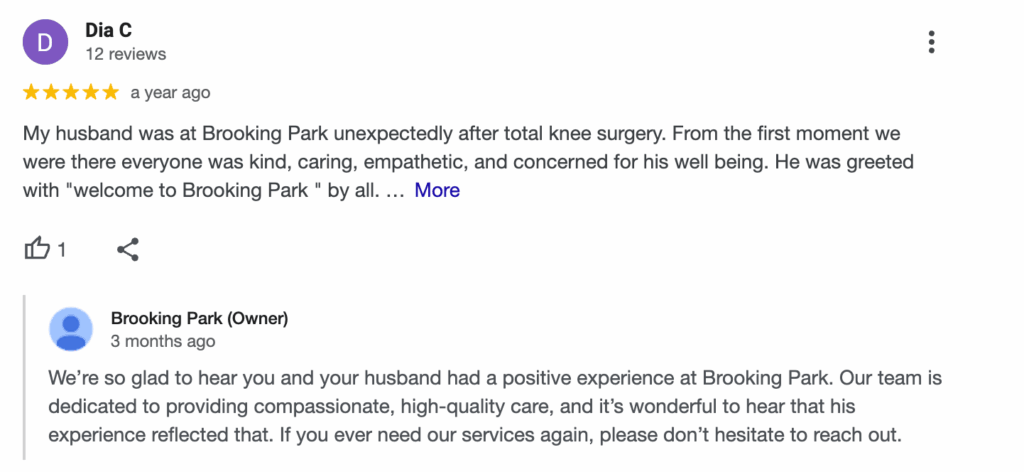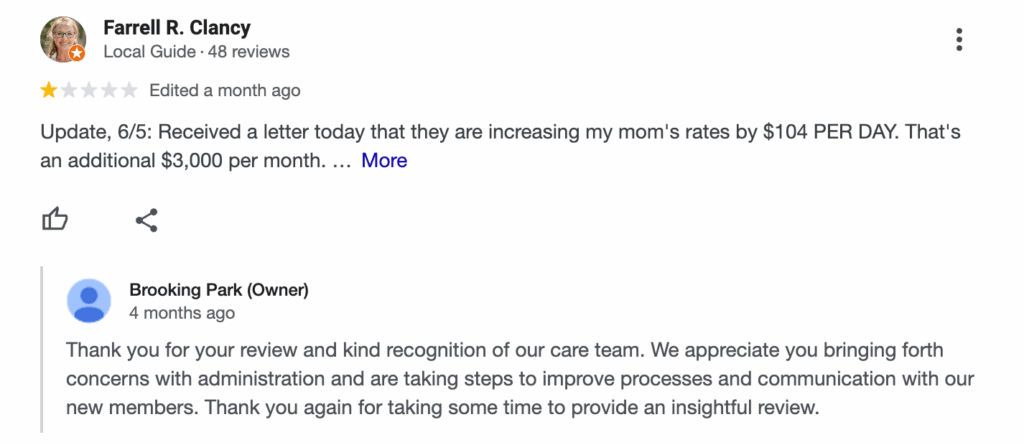Google EEAT: How Google Assesses Your Website
While Google is constantly evolving, it is important to understand how Google distinguishes between low-quality and high-quality content. E-E-A-T, which stands for experience, expertise, authoritativeness, and trustworthiness, is one of the key factors that Google uses to assess website content and content quality. E-E-A-T is incredibly relevant for SEO (search engine optimization) and search ranking.
Here’s what you need to know about E-E-A-T, including how to make your content more E-E-A-T compliant.
What is E-E-A-T?
E-E-A-T stands for experience, expertise, authoritativeness, and trustworthiness. The main focus of E-E-A-T is to build trust between the user and the website. These are part of Google’s Search Quality Rater Guidelines, a set of guidelines that Google’s human reviewers use to rate and assess website content quality.
It is important to note that these guidelines are NOT direct ranking factors for Google. The reviewers do not directly influence your website’s Google ranking, but their feedback helps refine Google’s algorithms, which in turn refines the search engine results pages (SERPs). Reviewers focus on improving user experience by making sure that search results are relevant content.
EEAT is especially important for pages that revolve around what Google calls YMYL (Your Money or Your Life) content. This is content that revolves around health, financial stability, or anything that could affect a user’s real-world wellbeing.
E-E-A-T Signals
Experience
The first E in E-E-A-T is Experience, which refers to the experience of the author, creator, or company that is producing the content. This focuses on the first-hand experience of the author. First-hand experience allows the author to give in-depth insight on the topic and builds trust between the author and the reader. Google used to operate under E-A-T guidelines, but added the extra E for experience to better cover search inquiries that revolved more around other users’ testimonials.
An example of this experience factor would be if you were looking for product reviews for a running shoe. You would want to know that the person writing the review has life experience with the shoe that the review was written about.
How to implement in your content: Write your content by drawing from personal experiences with the topic to better connect with the reader.
Expertise
The second E in E-E-A-T is Expertise which refers to the relevant knowledge, skills, certifications, and background of the author. Readers are more likely to trust content that is either written by an expert or reviewed by an expert. Authors with a high level of expertise and who demonstrate subject matter expertise to users will build trust and help improve the search rank of the content.
To showcase subject matter expertise, authors should talk about their background, highlighting their qualifications to speak on the subject.
This expertise is especially important for YMYL topics and those more personal well-being subjects. For example, if you were searching for medical advice for a problem you were having, you would trust an answer coming from a certified doctor more than an answer coming from someone who was in a similar situation.
How to implement in your content: Include author bios in your content to highlight the background knowledge, experiences, certifications, and skills of the author of the content. Adding author bios will also help the readers feel better connected to the author, building trust.
Example of an author bio:

Authoritativeness
The A in E-E-A-T is Authoritativeness which refers to how Google views your website as a whole as a source of reliable information. Google gauges authority by how many backlinks (other sites that reference your website) point toward your website. Backlinks should come from reputable and relevant websites in your industry.
Another good way to boost your website’s authority is to center your content around what the authority figures in your industry are talking about. These could take the form of industry case studies or blogs about the latest happenings in your industry.
How to implement in your content: Acquire backlinks from reputable sources that point towards your link building more authority for your website.
Trustworthiness
The T in E-E-A-T is for Trustworthiness. Google has said that trustworthiness is the most critical component of E-E-A-T. The other three, E-E-A, all build trustworthiness for a web page. It is also important to make sure that the website as a whole is safe and secure to make sure that users feel confident using your website.
Another great way to build trust is to make sure that your content is focused on what people are searching for. Making sure that your website and content are focused on user experience is a great way to build trust.
How to implement in your content: Build up a good reputation online by replying to all reviews that come in about your business and make sure that the user experience on your website is secure and intuitive.
How does E-E-A-T affect SEO?
E-E-A-T is how Google evaluates your content and website. If you want to rank higher in the Google search results, you need to play by their rules and guidelines. These guidelines are important for how Google will assess and in turn, rank your content.
Creating content with the E-E-A-T guidelines in mind will lead to you creating relevant and high-quality content. These guidelines will make sure your website is full of helpful content. While these guidelines are not a confirmed ranking factor for search, they are guidelines for what Google has deemed a good, authoritative search result. Adding the E-E-A-T guidelines to your current SEO strategies will benefit your website all around.

AI-Generated Content and E-E-A-T
AI-generated content seems to be the topic of a lot of conversations in the content marketing and digital marketing spaces nowadays, but how does AI-content fit into these E-E-A-T guidelines? AI holds an interesting position when it comes to E-E-A-T. There are both pros and cons to implementing AI-generated content into your content strategy.
Pros:
The first and most glaring positive of implementing AI-generated content is that it saves a lot of time. AI models like ChatGPT can spit out thousands of words within seconds, whereas human content creation takes a lot more time.
The next pro for AI is that it is incredible at gathering data to support claims. While these sources and data can be a bit of a mixed bag in terms of credibility, AI is still able to back up most of the things that it writes with sources which could add to the trust factor of content.
The last pro for AI is that it can tailor content to specific audiences. Tailoring your content to different audiences can improve your trustworthiness among readers. While this can be tricky to fine-tune, AI is usually pretty good at changing its tone to fit whatever audience you would like it to write to.
Cons:
The biggest downside to AI-generated content is the complete lack of human voice and tone in the content. AI can pull from sources and data really well, but cannot pull from real-world experiences like a human writer can which takes away from the experience factor. AI-written content can take a tone that feels spammy and not genuine like most trustworthy content. Fully AI-generated content can lead to posts and articles that lack a human voice and the authenticity that comes from content created by human authors.
The next downside comes from where AI is pulling its information and data from. Sometimes AI can pull data and facts that are false, don’t have adequate expertise, or are just out of date. When AI pulls from these poor sources it spreads misinformation on your website which will detract from your authority and trustworthiness.
Another thing to watch out for with AI-generated content is keyword jamming. Sometimes the AI will try and manipulate the algorithm by jamming as many keywords as it can into a piece of content to improve the search rankings of that page. This will lead to keywords in sentences that sound choppy and end up not making sense. Google’s algorithm is smart enough to detect this type of keyword jamming and will penalize your site in search results for doing this.
Best Practices When Using AI-Generated Content
- Use AI sparingly. Make sure that you are using AI to help you write your content, not to generate whole chunks of content. It is important to use AI as a tool to optimize and polish your own content.
- Add human voices and experiences. Add personal experiences and expertise to AI-generated content to have the highest quality content possible. Human content creators will still relate to the audience the best with real-world experience, so it is important to write content with a human tone.
- Incorporate trust signals into AI content. These signals should indicate to the reader that what they are reading is authoritative and reputable. Signals could include citing reputable sources, including quotes from experts, or including customer reviews.
Google has more recommendations about AI-generated content on the official site.
8 Tips to Improve Your Content for E-E-A-T
1. Regularly Update Content
Keeping your content fresh and up to date is a great way to showcase expertise and build up authority by positioning yourself as a thought leader and the go-to source of information in your industry. When your website is seen as a thought leader and an authority figure, it will have a strong E-E-A-T score.
2. Use and Cite Reputable Sources
Using and citing trustworthy sources will help turn your content library into a source for transparent and authoritative content.
3. Focus on User Experience
Google holds user experience in high regard when it comes to ranking, so making sure that your website is user-friendly and that the overall user experience is clean and easy to use will help users trust your site and will give you a high E-E-A-T score. Google’s search quality raters will give high scores to pages with an intuitive design and good page quality.
4. Build up Social Proof
Social proof is an important factor for building authority online. The main way to gain social proof is through reviews, so incentivizing past customers to leave reviews will help to build up your social proof.
Example of replying to a good review:

Example of replying to a bad review:

5. Create Helpful Content
Focus your content catalog on answering questions or adding FAQs that users are searching for in your industry. These could be questions like “How often should I water my grass?”. Answering Questions that are common search inquiries will help you rank higher and build authority in your industry. This type of people-first content will make your site look more authoritative and rank higher.
6. Use Backlinks
Backlinks are a great way to showcase authority online. Quality backlinks show search engines that high authority sites in your industry hold you in high regard. Think of these links as signals showing Google “This site is an authority on this topic and is a good site”.
7. Add An About Section
Adding an “About Us” page to your website, complete with contact information and general business details, provides users with valuable insights and fosters trust.
Heres’ an example of a thorough and complete about us page.
8. Manage your Brand Image and Reputation
Keep up with your brand reputation online by keeping an eye out and replying to all reviews, good or bad. Replying to reviews will show that you care about your customers and will create an overall positive reputation online, helping potential customers trust you.
FAQs
How can I optimize my content for E-E-A-T?
You can optimize your content for E-E-A-T by prioritizing real-life experiences, highlighting industry expertise of the content creators, establishing your site as an authority figure through backlinks and writing about important things happening in your industry, and building trust with the audience through a convenient user experience and transparency with the audience.
Once I’ve optimized my content for E-E-A-T once does that mean I’m done for good?
NO! It is important to regularly update content to make sure that all facts are up to date to keep your E-E-A-T score up. This could look like refreshing content regularly to make sure that it is up to date with what searchers are looking for.
Is E-E-A-T a ranking factor for Google?
No, E-E-A-T is not a direct ranking signal for Google, however, E-E-A-T principles are part of Google’s Search Quality Rater Guidelines that human reviewers use to rate website content. Google’s quality raters use these guidelines to give feedback to Google to refine its algorithm.
What is the difference between E-E-A-T and E-A-T?
E-A-T (expertise, authority, and trustworthiness) were the old Google guidelines before adding experience into the guidelines, making E-E-A-T.
Key Takeaways
SEO professionals all agree that content created within the E-E-A-T guidelines is a great way to rank higher in Google. Making sure that you are creating quality content that matches users’ search intention is key to getting a high E-E-A-T score.
Google aims to match user search intent with quality content from reputable sites. Google created the E-E-A-T guidelines to give site owners a scorecard for which they were being rated on by Google’s quality raters. These guidelines are not a direct ranking factor, but do give Google’s quality raters a way to judge page quality.
It is important to cultivate a positive reputation online by replying to all reviews, good or bad, to boost brand reputation and by setting yourself up as an authority figure in your industry by gaining backlinks from other authoritative sites.
Google and other search engines are rewarding sites with quality content that showcases experience, expertise, authoritativeness, and trustworthiness. It is important to create quality content that focuses on answering user questions. Your site will gain a positive reputation online if it has helpful content, is an authority figure in your industry, and is transparent with an intuitive and secure user experience.






